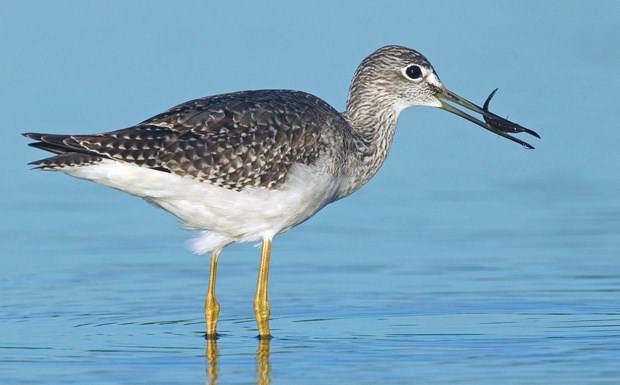It might seem a bit premature to speak of fall given the very warm weather we've been having.
We divide the year into four seasons with official start dates, but in reality, one season blends into the other. For example, you can see early signs of fall in late-summer.
Spring and early summer at the Conservation Area at Maplewood Flats were full of bird song. Some species, like the song sparrow, spotted towhee and purple finch, are residents, but others like warblers, vireos, the western tanager and black-headed grosbeak are neo-tropical migrants that come north to breed. Apparently, this is to take advantage of longer days and abundant insect life.
The purple martin winters in Brazil, making a round trip to and from the North Shore of 22,000 kilometres in approximately 21 days (according to Interesting Facts about the Purple Martin - Wild Bird Trust of British Columbia, 2015). Another fascinating aspect of the martin's life is that one of its favourite foods is dragonflies - especially the big blue ones (darners).
We also recently watched a female redwinged blackbird enjoying a dragonfly snack.
Late-summer is the time for rearing young, so many birds will not be as vocal, since there's no longer a need to attract a mate, or to warn away the competition from their territory. Birds of course, not only sing, but they also have various calls. For example, there are begging calls of young birds to get the attention of their parents - they want to be fed. Just listen to the demanding and constant calls of young crows.
Birds also use calls to keep in touch, and to warn each other of danger. A few birds, like the redeyed vireo (preacher bird), sings well into summer - thousands of times per day.
Song sparrows sing at all times of the year and whose heart is not warmed by the sweet "tea-time" ("sweetie") notes of the black-capped chickadee?
Another sure sign of change from summer to autumn is seeing bushtits back in flocks. In summer, bushtits break up into breeding pairs, but now they are back again in social groups of 15, 20, 30, or more. Did you know the female bushtit has a lightcoloured eye whereas the male's is dark?
Shorebirds ("waders") have begun their remarkable migration from northern breeding grounds to wintering areas as far as South America. Most recently at Maplewood Flats, greater yellowlegs have been spotted. Watch too for least, pectoral and spotted sandpipers. The most recent Maplewood Checklist notes a remarkable 27 wader species, a figure that speaks volumes about the importance of the mudflats, also critical habitat for many waterfowl species and other wildlife.
In the realm of waterfowl, surf scoters and green-winged teal have recently been spotted. Soon they will be joined by northern pintails, American wigeon and other dabblers. There are always resident glaucous-winged gulls, but watch too for mew, California and ring-billed gulls.
Visitors to the sanctuary can get wonderful views of ospreys with a scope or a good pair of binoculars. You may be treated to seeing an osprey bringing a fish to the nest. The best spot to watch for both ospreys and purple martins is Osprey Point.
Another great feature of the sanctuary is its insect life - great for nature photographers.
Dragonflies, damselflies and butterflies all love sunny days.
Recently, a rare Parnassius clodius butterfly was photographed at Maplewood. Caterpillars of this beautiful species feed on bleeding heart (Dicentra). Watch for Lorquin's admiral, red admiral, gray hairstreak, painted lady and others.
Late-summer is a wonderful time to be outdoors watching birds and other wildlife (like otters at Osprey Point).
Keep safe.
Al Grass is a naturalist with Wild Bird Trust of British Columbia, which offers free walks at The Conservation Area at Maplewood Flats on the second Saturday of every month. The next walk will be Saturday, Aug. 8 starting at 10 a.m. Participants will be looking and listening for early signs of fall. Meet at WBT's site office, 2645 Dollarton Hwy, North Vancouver. Walks go rain or shine. wildbirdtrust.org



